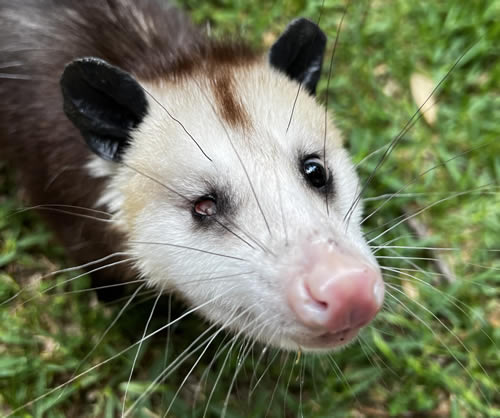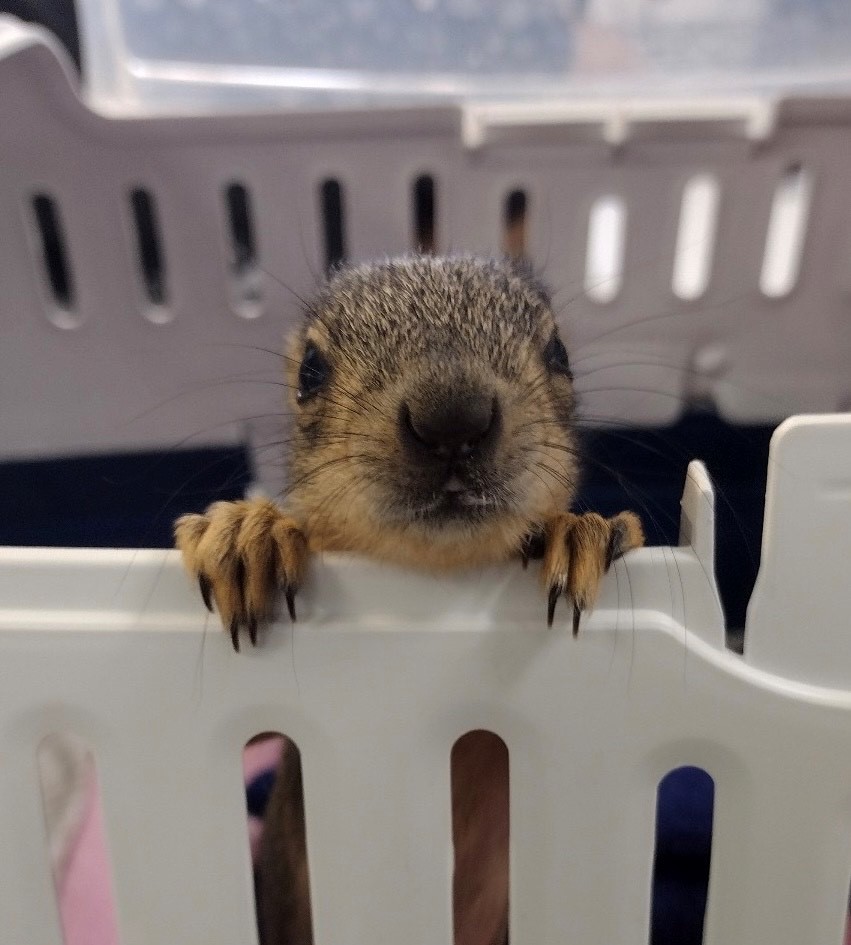Have you found a BABY songbird or dove?
If able, please attempt to reunite the baby with its mother. Please do not attempt this if the baby is:
- Injured
- Caught by cat/dog/hawk
- Found in an unsafe area (ex: parking lot with no green space around)
- Flies are circling
Please call us at 713-468-8972. If we are closed, leave a voicemail and follow the Temporary Care Instructions below.
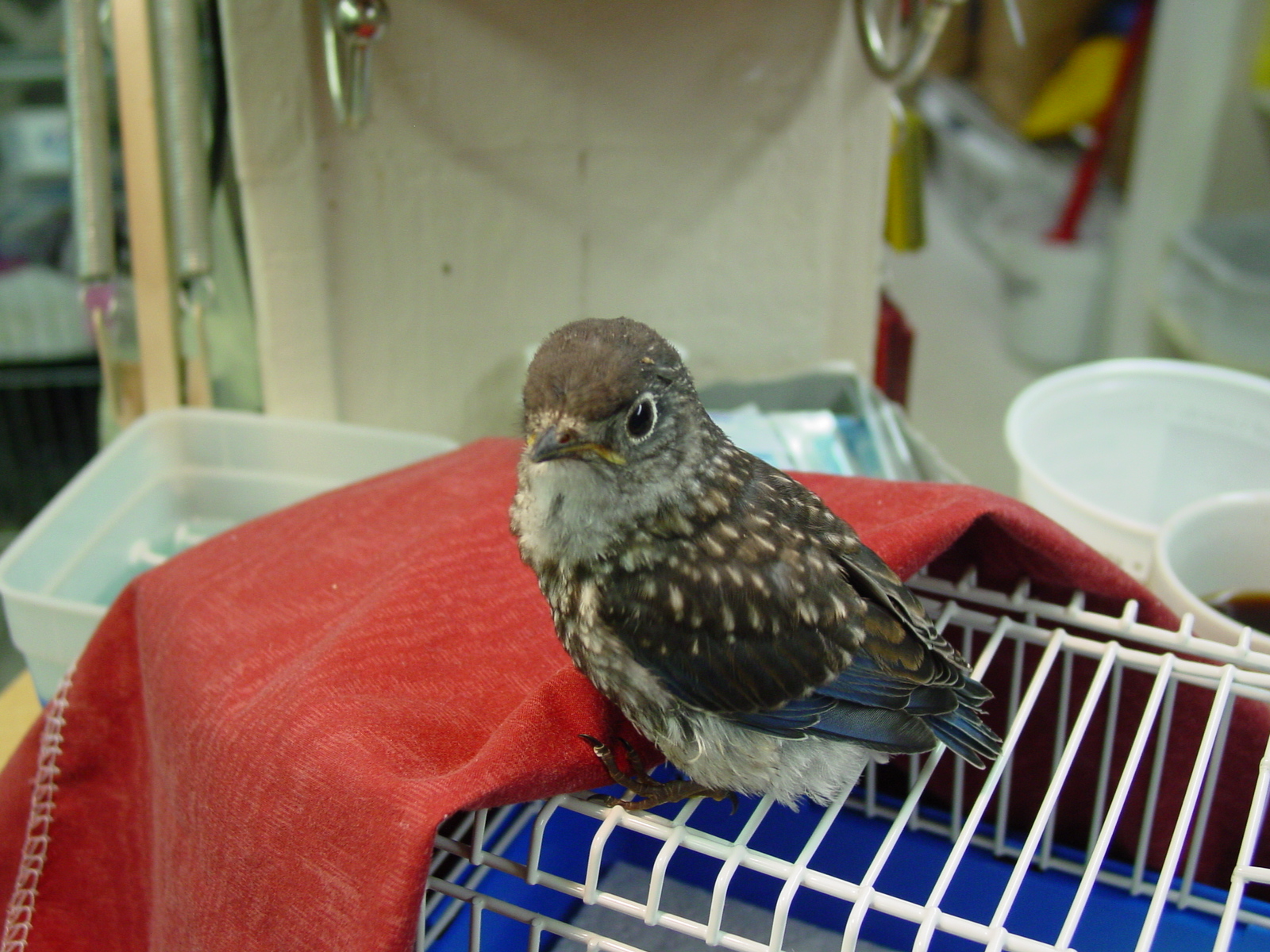
If none of the above apply, watch this video with instructions on how to renest a baby bird. Printable instructions can be viewed here if you are unable to play the video.
If you attempt to renest the bird and the attempt is unsuccessful, please call us at 713-468-8972.
Have you found an INJURED or ILL songbird or dove?
If you find a bird of any age that is:
- Caught by a cat or dog
- Visibly injured
- Unable to walk
- Limping or dragging a limb
- Lethargic
- Covered in ants or flies
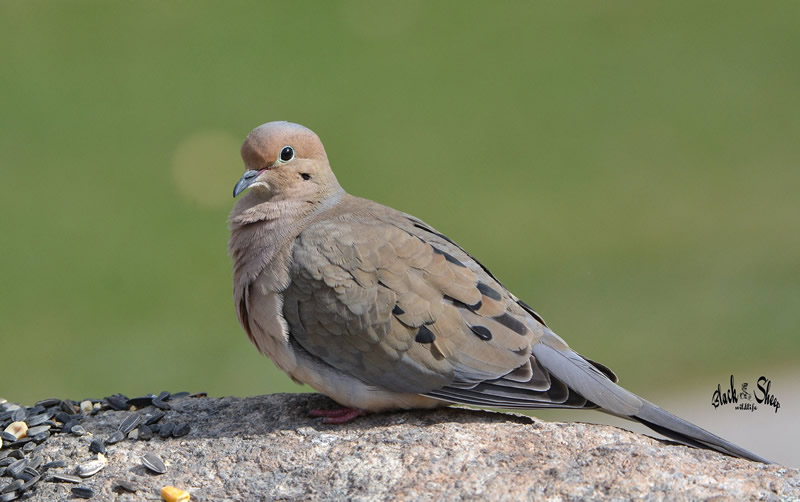
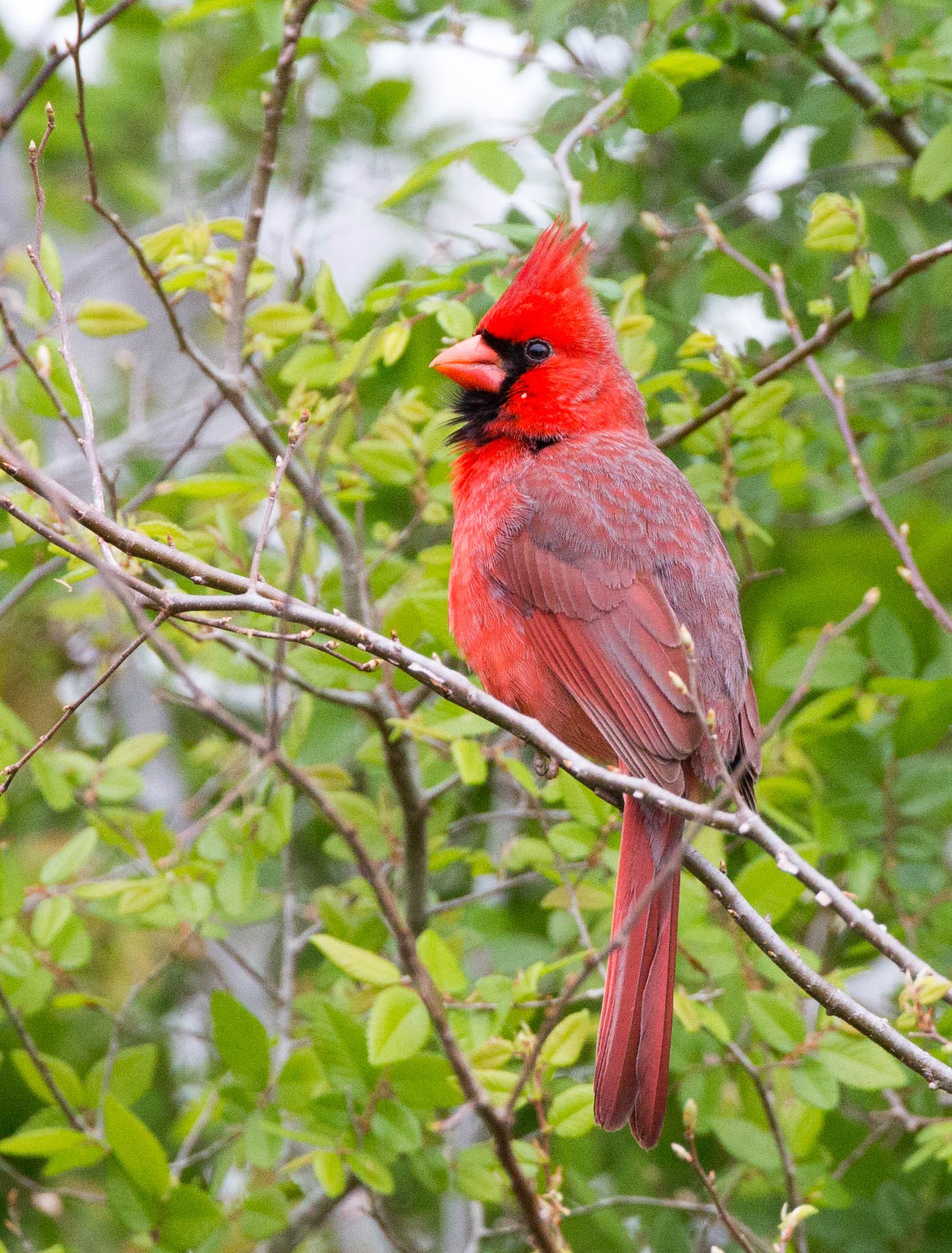
Please contact us at 713-468-8972 as soon as possible to determine further steps. If we are closed, leave a voicemail and follow the Temporary Care Instructions below.
What is a Fledgling?
Common terms used to describe baby birds are hatchling, nestling, and fledgling. Hatchlings are freshly hatched chicks, while nestlings are only slightly larger. Nestlings still remain in the nest and are completely dependent on the mother while she searches for food to bring them. Fledglings are large enough that they no longer fit in the nest. They can usually be found hopping around in the area their original nest was in. They can hop around for 1-3 weeks still being fed by the mother until their flight muscles are strong enough to take off. Juveniles typically look very similar to adults but often have shorter tails and are not as strong of flyers.
Fledgling birds are often perceived as injured due to their inability to fly. This makes them the most susceptible to kidnapping! We strongly recommend watching the video above before taking in any baby birds. Fledgling and hopping around is perfectly normal behavior for these birds. So long as they are still being visited and fed by the parents then they are perfectly safe and protected.
Nestlings typically have pin feathers. These are feathers that have not yet fully formed to be fluffy and instead are like sharp sheathes waiting to grow. Nestlings will also have some small fluffy down feathers as well to keep them warm. These wispy feathers sometimes remain on the baby bird as they grow into fledglings.
Another common feature of baby birds is what is called gape flanges. These are small flappy and flexible portions of the beak. They are on either side of the bird’s face and are what help the baby bird know when to open its mouth to be fed by the mother.
Test your Skills! Look at the photos below and guess if they are of a fledgling or nestling. Click or tap on the images to learn the answers.
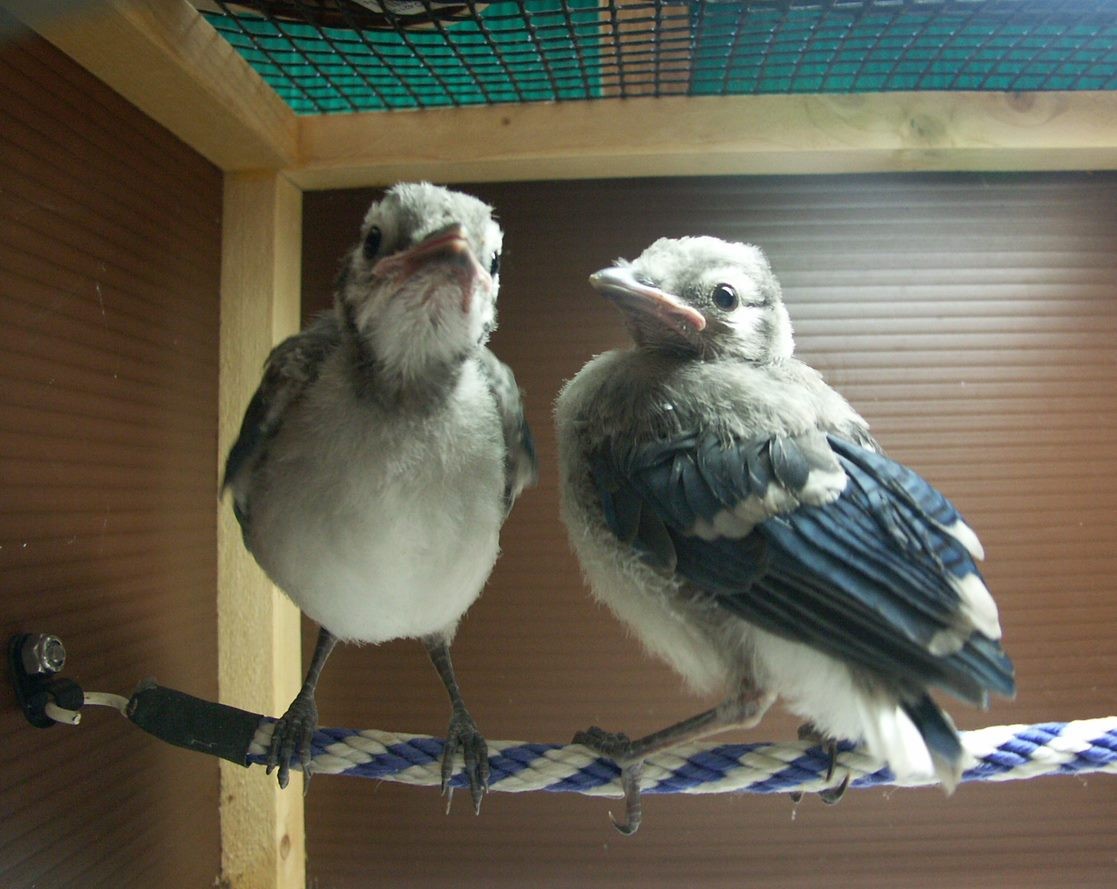
Fledgling blue jay with short tail feathers
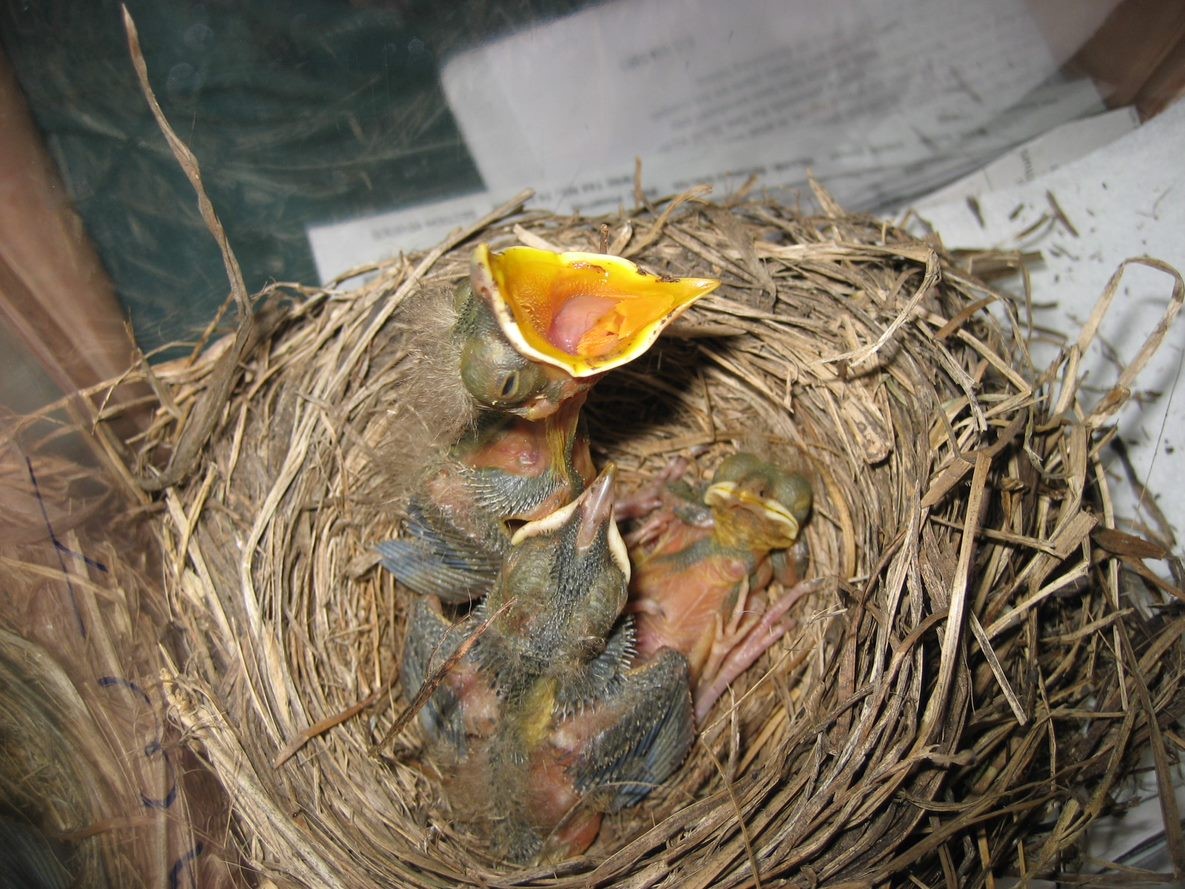
Nestling American Robin with few down feathers
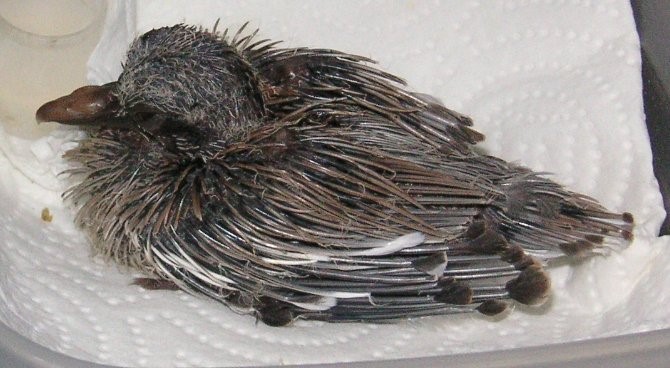
Nestling White Wing Dove with Pin Feathers
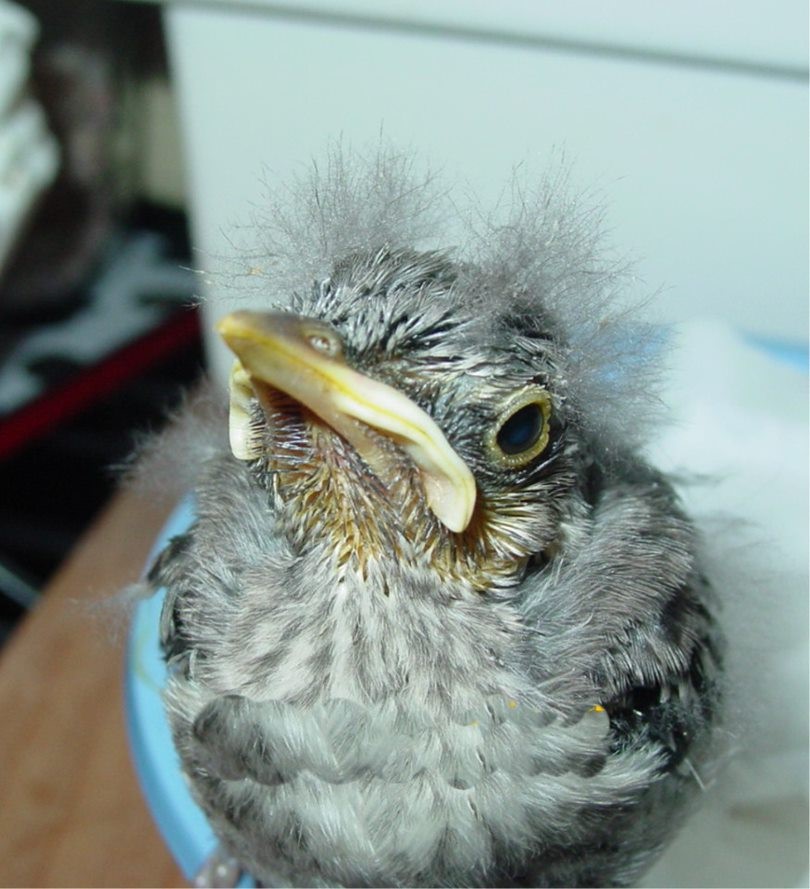
Fledgling Mockingbird with down feathers on the head
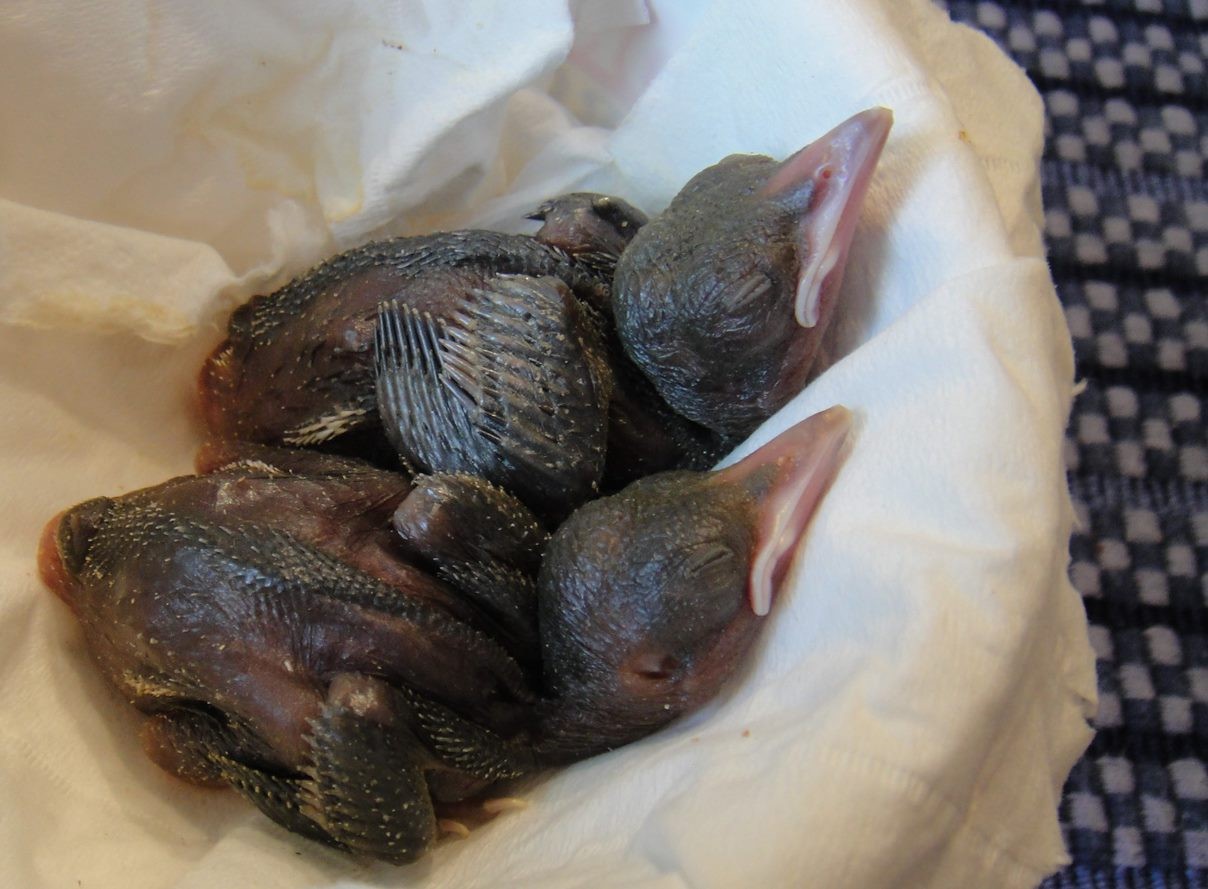
Nestling blue jays with pin feathers
Have you found a hummingbird?
Hummingbirds are very fast and agile, so they should not be able to be caught or found on the ground. They need to eat every 15 minutes so all instances with injured hummingbirds need to be addressed immediately.
Hummingbirds are typically observed arriving in the spring and summer months, and they migrate to Central America each winter. The most commonly observed species in the Houston area is the Ruby-Throated hummingbird (Archilochus colubris). While less common, the Rufous Hummingbird (Selasphorus rufus) and Black-Chinned hummingbird (Archilochus alexandri) may also pass through Houston but are more likely to be spotted during the winter.
For more information about hummingbird feeder etiquette, check out our Attracting Wildlife page HERE.

Have you found a woodpecker?
Woodpeckers commonly nest in holes in trees and do not have a fledgling stage. If you see a grounded woodpecker it will need care immediately. Baby woodpeckers typically come in pairs. Look around for a second nesting if just one is found near fallen limbs.
For more information about feeders specifically for woodpeckers, check out our Attracting Wildlife page HERE.
If you have woodpeckers creating unwanted holes in your walls or trees, check out or Dettering Wildlife Page HERE.

Temporary Care Instructions for ALL Animals:
- Houston Humane Society Wildlife Center (HHS Wildlife Center) recommends that you wear gloves or use a cloth barrier when handling wildlife.
- Prepare an appropriate-sized cardboard box by poking air holes in the top and placing a soft cloth (T-Shirt, towel, paper towels) in the bottom. DO NOT put the animal into a plastic bag.
- Place the animal into the prepared box and tape the box shut. For injured adults, place the box on its side next to the animal and use a stick, broom, or rolled-up newspaper to gently push the animal into the box.
- Do not give the animal any food or liquids. Feeding an animal an incorrect diet can result in injury or death. In addition, rescued animals can get wet from liquids and become hypothermic and/or spill food on their fur/feathers, potentially causing damage.
- Keep the animal in a warm, dark, quiet place. Darkness makes the animal feel more secure. If the animal is a baby, the box can be placed half on and half off a heating pad set on low. If the animal gets too warm it will move to the other end of the box. Do not place adult animals on a heating pad.
- Leave the animal alone. Human noise, touch, and eye contact are very stressful to wild animals and can result in shock or even death. This is especially important in the case of injured or adult animals.
- If an animal has been caught by a cat or dog, please call HHS Wildlife Center immediately at 713-468-8972. Even if wounds are not visible, the animal needs medical intervention as soon as possible.
- Keep children and pets away. BE CAREFUL! An animal that is hurt or frightened may bite.
- Call HHS Wildlife Center at 713-468-8972 as soon as possible!
General Information about Songbirds and Doves in the Houston Area
Songbirds
Hundreds of songbird species can be found in the Houston area. Some of the most common species admitted by HHS Wildlife Center are: great-tailed grackles (Quiscalus mexicanus), common grackles (Quiscalus quiscula), blue jays (Cyanocitta cristata), northern cardinals (Cardinalis cardinalis), American robins (Turdus migratorius), and northern mockingbirds (Mimus polyglottos), Texas' state bird.
Songbirds are mainly land birds that live in a wide variety of situations, from open grassland to forest. Although songbirds include some of the best songsters (such as thrushes), some have harsh voices like crows, and some do little or no singing at all. Spring is the typical mating season for most songbird species in Houston. The average life expectancy varies greatly from as little as little as two years to as many as 20 years.
Doves and Pigeons
Doves commonly seen in the Houston area include: mourning doves (Zenaida macroura), white-winged doves (Zenaida asiatica), Eurasian collared-doves (Streptopelia decaocto), Inca doves (Columbina inca), and rock pigeons (Columba livia). Doves' nests are notoriously flimsy, and they lay two eggs per clutch. In Houston, we typically see baby doves from as early as February to as late as October.

